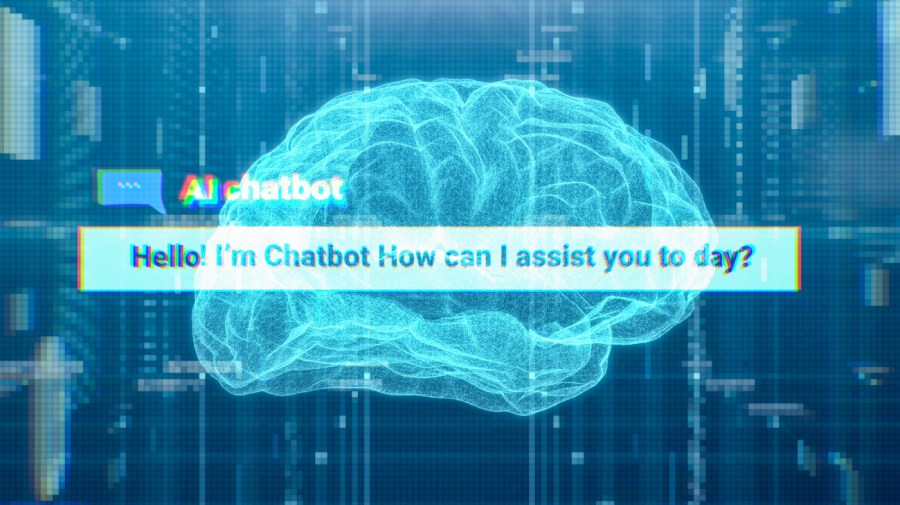
Worker productivity gains enabled by artificial intelligence (AI) are concentrated at the lower end of the skill and income spectrum, a phenomenon that economists and labor unions warn could supercharge the practice of outsourcing jobs to lower paid regions of the globe.
Several recent studies show introducing language-based AI software in the workplace benefits less-skilled workers more than highly skilled ones, which could make lower-skilled work more valuable and pull more higher-paid jobs overseas.
“If you take the case of generative AI aiding low-skilled workers in particular, that gives businesses the opportunity to replace more skilled workers with less skilled, lower wage labor,” Carl Benedikt Frey, an economist at Oxford University, told The Hill.
“It might even [lead to] a significant wave of offshoring as businesses begin to take advantage of large pools of cheap labor in places like India, Bangladesh, and the Philippines where there are huge wage disparities,” he said.
Not only do AI programs like ChatGPT raise the overall productivity of workers, they decrease the differences between better workers and less productive ones, essentially homogenizing the workforce.
“Inequality between workers decreases, as ChatGPT compresses the productivity distribution by benefiting low-ability workers more,” research from Massachusetts Institute of Technology (MIT) led by Shakked Noy and Whitney Zhang and published last year concluded.
Another 2023 study from Stanford and MIT found that while general productivity increased by an average of 14 percent as a result of generative AI, it increased by 34 percent among less experienced workers. That study by Erik Brynjolfsson and Lindsey Raymond looked at cases where AI helped improve productivity and worker experience specifically in outsourced settings, such as call centers.
The authors noted their results were consistent with other studies, all of which found that generative AI systems “[compressed] the productivity distribution, with lower-skill workers benefiting the most.”
Policymakers are already starting to sound the alarm about the long-term effects AI could have on the labor market.
International Monetary Fund (IMF) Chief Kristalina Georgieva said Monday that AI is hitting the global labor market “like a tsunami,” Reuters reported.
She said AI could affect as much as 60 percent of jobs in advanced economies and 40 percent of the global jobs market within the next two years.
U.S. labor unions are growing increasingly concerned about the pace of the technology’s adoption and the extent of its integration into production process, as well as the fact business owners are moving ahead with these changes without consulting their workforces.
“Employers are currently deploying increasingly sophisticated AI-enhanced technologies without workers’ consent in order to hire, monitor, evaluate, discipline and even fire workers,” said the AFL-CIO, the nation’s largest labor confederation, in a recent statement.
After striking last year, entertainment workers in the Writers Guild of America won guarantees from studios that AI wouldn’t be allowed to write any literary material and that AI-generated work would not be considered as source material.
However, such guarantees could be undermined as consumption habits move increasingly to social media and other online platforms that don’t maintain labor contracts with content creators.
The standardization of productivity being delivered by AI and the resulting opportunity it gives to companies to lower their overhead and outsource their labor could exacerbate a phenomenon known as the productivity-pay gap that has been going on roughly since the inception of commercial computation.
While fears of mass unemployment resulting from computers proved unfounded, the gap between how much workers have been producing and how much they’ve been getting paid has been getting bigger since the 1970s, though it really took off in the 1990s and 2000s.
American workers have increased their output per hour by about 140 percent since 1973 while inflation-adjusted employee compensation has increased by only 45 percent over the same period. That means workers are getting paid much less compared to how much more value they’re producing for employers. The magnitude of the gap differs depending upon the measure of inflation used, but it persists no matter how it’s calculated.
Over roughly the same period, the overall portion of the economy devoted to compensating work, as opposed to returning profits for shareholders, has dropped from 64 percent of gross domestic product (GDP) to 59 percent in 2019. Meanwhile, the profit share has doubled, increasing from 4 percent of GDP in 1974 to 8.5 percent in 2022.
While significant changes in the U.S. tax code have been enacted over that period along with new labor and trade practices associated with globalization, the coordination of production across international borders enabled by widespread technological adoption has also been a factor in the productivity-pay gap.
“Being at the forefront of the computer revolution was beneficial [to the United States] in terms of productivity, but we also see a growing wedge between productivity and wage growth beginning in the 1980s,” Oxford’s Frey said, attributing the split to increased offshoring as well more brute automation of production processes.
As to what jobs could eventually go extinct as a result of generative AI, Frey singled out work involving repetitive tasks occurring in structured environments as those most likely to be automated. That includes transportation, logistics and warehousing work, where much of the labor is carried out in highly regimented processes.
Jobs that could see increasing wage stagnation as a result of outsourcing include software design, computer programming and content creation, such as in the field of animation, where countries like South Korea and Canada produce a significant amount of U.S. animated content.
While the work of physical and intellectual production may be subject to increasing automation as a result of AI, the prospect of a fully automated firm, in which management functions, such as pricing and making acquisitions, also become automated is also conceivable.
“It depends a lot on what sort of company we’re talking about and all the operations that are involved, but I can certainly see parts of that being automated,” Frey said.














